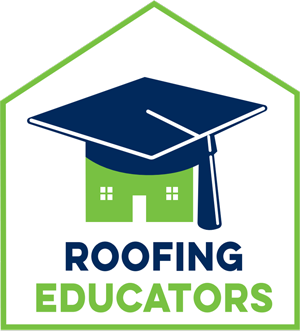Your roof is one of the most critical components of your home, protecting it from harsh weather, pests, and other potential hazards. While visible roof damage, such as missing shingles or leaks, is relatively easy to notice, hidden roof damage can silently compromise your home’s structural integrity. Identifying and addressing this damage early can save you significant time, effort, and money.
In this comprehensive guide, we will explore how to uncover hidden roof issues and why regular roof inspection is essential to maintaining your home.
The Importance of Routine Roof Inspections
Performing regular roof inspection Summerville ensures your roof remains in optimal condition. It’s not just about spotting problems; it’s about preventing them. Many homeowners overlook minor issues that eventually escalate into costly repairs or replacements. A well-maintained roof enhances your home’s lifespan, energy efficiency, and resale value.
Signs of Hidden Roof Damage
Hidden roof damage can be tricky to identify without proper knowledge. Here are some subtle indicators to watch for:
- Water Stains and Discoloration
Look for water stains on ceilings or walls inside your home. These can be early signs of leaks caused by damaged shingles or compromised underlayment. - Sagging Roof Sections
A sagging roof can indicate structural issues, such as weakened support beams or water damage within the roofing layers. - Mold or Mildew Growth
Excessive moisture trapped in your roofing system can lead to mold and mildew, which not only damages the roof but also poses health risks to your family. - Unusual Energy Bills
A sudden increase in heating or cooling costs might indicate poor insulation due to gaps or holes in your roof. - Granule Loss on Shingles
If you notice excessive granules in your gutters, it might mean your shingles are deteriorating faster than expected.
Tools and Techniques for Effective Inspections
While professional inspections are invaluable, there are simple methods homeowners can use to detect potential issues:
- Binoculars for Visual Scans
From the ground, binoculars can help you spot broken shingles, damaged flashing, or debris accumulation. - Check the Attic
Inspect the attic for water stains, streaks, or light penetration, which may indicate roofing problems. - Inspect Gutters
Check your gutters for granules, debris, or signs of rust. These could point to roof damage. - Professional Drone Inspections
Some companies offer drone technology to provide detailed images of hard-to-reach areas, ensuring nothing is overlooked.
Common Causes of Roof Damage
Understanding what can harm your roof helps you take proactive measures:
- Weather Conditions
Heavy storms, hail, and high winds can dislodge shingles, damage flashing, or cause water infiltration. - Tree Branches
Overhanging branches can scrape against your roof or fall during storms, leading to punctures or other damage. - Improper Installation
A poorly installed roof can develop issues over time due to inadequate sealing or structural flaws. - Aging Materials
Roofing materials naturally wear out over time. Identifying signs of aging, such as curling shingles or rusted flashing, is essential.
Steps to Perform a Thorough Roof Inspection
If you’re ready to inspect your roof, follow these steps for a detailed evaluation:
- Safety First
Ensure you have the proper equipment, such as sturdy shoes and a secure ladder. Avoid climbing on the roof without experience or safety gear. - Examine the Exterior
Walk around your property to inspect the roof’s surface, gutters, and nearby trees. Look for missing shingles, cracks, or debris. - Inspect Flashing and Seals
Pay attention to areas around vents, chimneys, and skylights. Damaged flashing or seals can lead to leaks. - Check Ventilation Systems
Proper roof ventilation is crucial to prevent moisture buildup and extend the life of your roof. - Document Your Findings
Take photos of any damage for reference. This documentation can be helpful when filing insurance claims or seeking professional repairs.
Why Hire a Professional for Roof Inspections?
While DIY inspections can catch some issues, professionals bring expertise and tools that ensure a more thorough evaluation. Roofing Educators, for instance, specializes in comprehensive inspections that uncover hidden damage. Their team can identify potential risks and recommend effective solutions tailored to your roof’s needs.
Preventative Measures to Protect Your Roof
Prevention is always better than cure. Here are steps to minimize damage:
- Schedule annual professional inspections.
- Keep gutters clean to prevent water overflow.
- Trim tree branches near your roof.
- Address minor repairs promptly to prevent escalation.
The Cost of Neglect
Failing to inspect your roof regularly can lead to expensive repairs or even a full replacement. For example, what starts as a minor leak can weaken structural beams, ruin insulation, and create mold issues. By staying proactive, you can avoid these costly outcomes and extend your roof’s lifespan.
Your roof is more than just a structure—it’s a vital shield for your home and family. Regular inspections, combined with preventative measures, can help you spot hidden damage before it becomes a bigger issue. If you’re unsure about the state of your roof, don’t hesitate to contact Roofing Educators. Their expertise and dedication to quality service ensure your roof remains in top condition, safeguarding your home for years to come.
Roofing Educators
415 N Main St unit B, Summerville, SC 29483, United States
(843) 994-2971



8dVcv7mfAMO